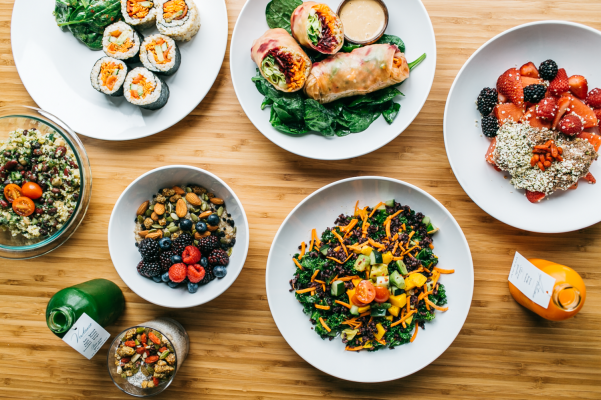Fresh juice delivery turned healthy meal delivery startup Thistle switched over to a subscription-based healthy food business today.
Thistle launched last summer in San Francisco’s Mission neighborhood. I remember walking by one day and seeing a pop-up out in front of West of Pecos. I can’t recall now what it was I tried, but I do remember the concoction was delicious and made me feel good. I was delighted to see the startup branch out to other healthy food as well.
Thistle has now picked up $1 million in seed from various investors to help build out a new subscription model. It will still focus on healthy meals and juices (half the deliveries are in liquid form) but the new plan gives customers a regular healthy meal service, as opposed to the old plan, where customers chose anywhere from one juice delivered to a one, 3, 5, or up to 20 day plan.
It’s a nice option in the healthy food space, but Thistle faces buckets of competition for meal delivery in the 7×7. Based on my own count, there are at least 13 meal delivery services in San Francisco proper. Many of them, like Sprig and PlateJoy, also deliver healthy meals.
Because we are able to buy high-quality ingredients in bulk, we are able to provide you a meal that is often less expensive than if you were to purchase the same ingredients yourself. Ashwin Cheriyan, Thistle founder
“Despite exercising regularly, my diet was starting to take a meaningful toll on my health,” Cheriyan told TechCrunch. “I saw countless other people in the same situation and Thistle was launched to provide a convenient solution for people that aspired to eat healthy as part of their busy lifestyles.”
I tried out the beta version of the subscription-based service myself for a week. It was definitely more convenient. A Thistle delivery person dropped off a cooler bag full of meals for two days at a time, consisting of acai smoothie and toppings, chia pudding, colorful salads, snacks, juices and a hearty dinner. All of it was gluten and dairy free. There was a vegetarian/vegan option as well, but I chose the non-vegetarian option.
The new plan is definitely not for the average person. For one, you’ve got to be committed to eat healthily. No more going out to dinner every other night of the week. No Postmating yourself a late-night burrito. It also requires taking that salad with you to work and eating that instead of what’s available at the food trucks nearby.
The plan is also pricey. You’re paying for that healthy convenience. Three meals a day plus a juice and a snack costs $220 for a weekly subscription, or $44 per day. That’s $880 per month. Those living in SF likely spend closer to $400 to $500 on groceries and going out in a 30 day period, depending on how much they make and where you get the data.
You don’t have to go full Thistle for every meal, every day, however. There’s also the option to order just one meal. Subscription meal plans start at $10 for one meal (including delivery). That’s less than many lunch places around town.
“Because we are able to buy high-quality ingredients in bulk, we are able to provide you a meal that is often less expensive than if you were to purchase the same ingredients yourself,” Cheriyan said. “Even if it is cheaper to make a meal yourself, many people end up throwing away a lot of the leftover ingredients, resulting in increased costs and a greater environmental impact.”
To Cheriyan’s last point, a lot of meal delivery services are also pretty wasteful. The Thistle founder told me that was part of the move to a subscription model.
“Even though we worked hard to keep this at a minimum, we still saw a fair amount of food waste at the end of each shift, which in turn has both a steep cost on an environmental level as well as a unit economics level. I’m sure others in the space are seeing this as well,” Cheriyan said. “We thought there was a better way and this was a key driver of why we moved to a scheduled delivery subscription model.”
His overall goal is healthy eating. I can definitely say I felt healthier and more satisfied after my week on the plan. It will be interesting to see how this startup evolves over time and works to stand out in the crowded SF food delivery space.
